Noita is a roguelite game developed by Nolla Games, out of Finland. It has been slowly gaining traction ever since its initial release date in September 2019, and the 1.0 version is expected to hit the virtual shelves on October 15 2020. At the time of writing, the game isn’t fully complete, but holds more than enough content to warrant a full review.
Roguelite.. you mean roguelike, right?
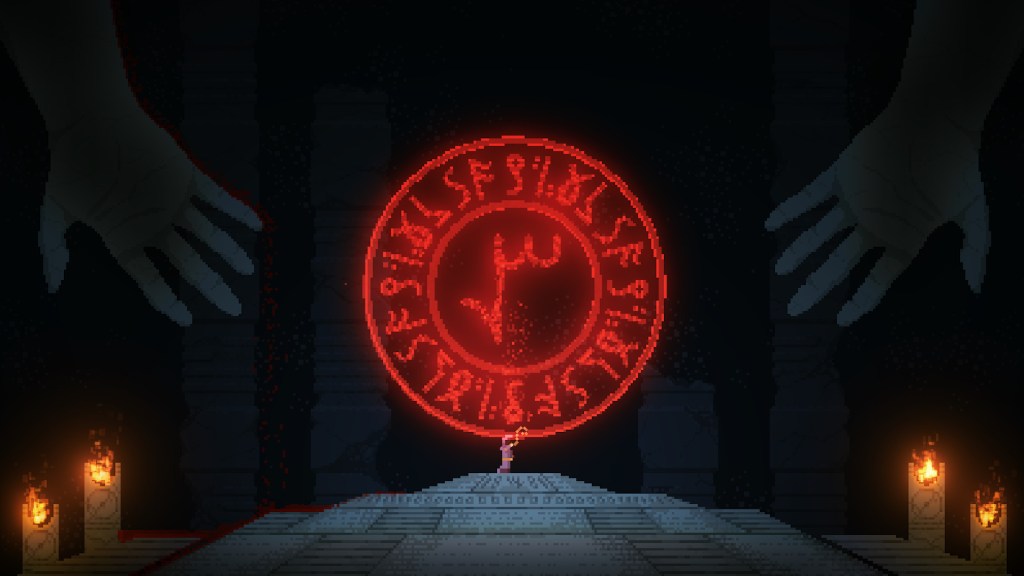
At first glance, roguelike is an umbrella term used for games that don’t fit into a particular genre, often indie games. In reality, roguelike is a well defined genre of games that feature permanent death, procedurally generated levels, and no set ending, meaning the goal is to progress as far as possible before dying. Roguelite, on the other hand, has an ending. A very difficult ending to reach, but an ending nonetheless. Pressing “New Game” in Noita will spawn the player character at the entrance of a pixelated side-scrolling cave with two magic wands – the player’s weapons – and a water flask. The player must then make their way down a series of cave systems, each with their own set of enemies, fauna, and climate, until they reach the final boss. Different wands with different spells are scattered throughout the levels, along with vials of different liquids and elements – more on that later. Between each level, the player enters a safe zone where they can regain all their health and mana, purchase spells with gold looted from enemies, choose a perk that will help them on their journey, and pick and mix spells, assigning them to wands to customize their attacks. Leaving the safe zone creates a point of no return, preventing the player from returning to safety.
With great power comes great responsibility.
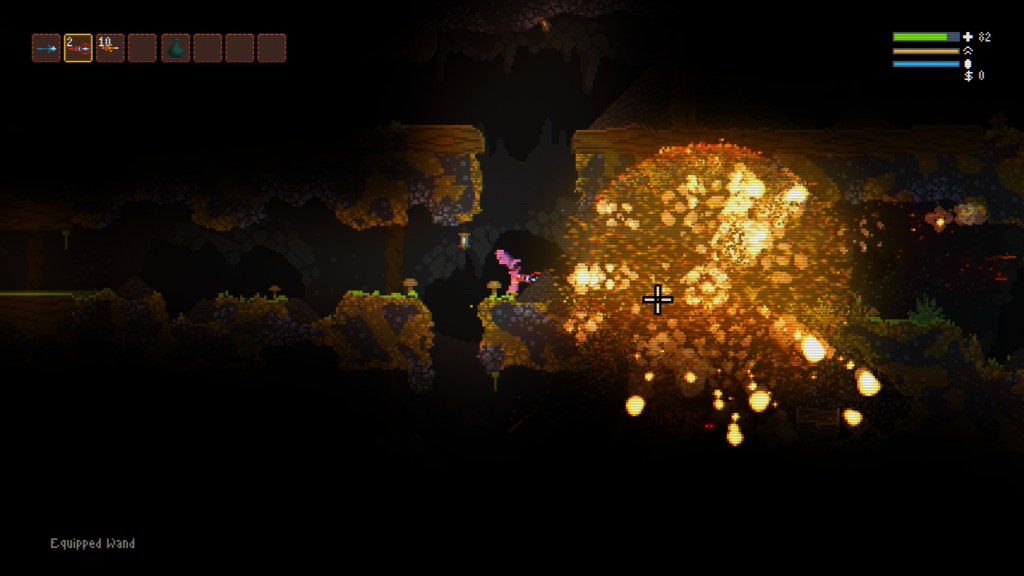
Spells come in three varieties; attacks, utilities, and modifiers. Attacks range from a simple energy orb with low damage potential, to summoning a lightning bolt that can one-shot most enemies. Utilities are things like a light emanating from your wand to reveal the fog of war, or a drilling spell, to carve a way around obstacles. Utilities aren’t meant to harm enemies, but can be used to unleash powerful combos, like drowning an area with a cloud of whiskey and setting the liquor on fire with a fire bolt – again, more on that later. Modifiers modify your spells, like casting three at once, or changing the arc of projectile spells. One thing to keep in mind while playing Noita is that what is dangerous to enemies is also dangerous to the player; almost every spell is a double edged sword. Summoning a black hole with your wand is an easy way to dispatch large groups of enemies, but it’s also an easy way to send the player back to the entrance of the first cave. The deeper the player gets into the cave system and the more spells they acquire, the more they need to be wary of their own powers, lest they be the cause of their own death. A lucky player will find a lightning spell in the second level, but a good player will put that wand away the second they see water or metal.
I have the power of god and anime on my side!
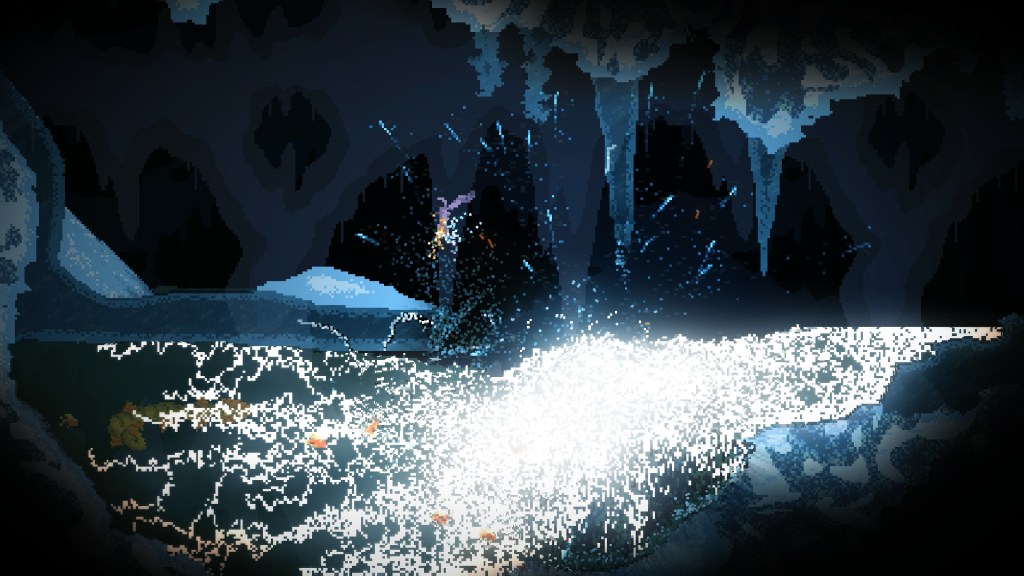
Earlier, I mentioned vials of different elements, setting whiskey on fire, and electrocuting yourself to death. What truly sets this game apart is that every single pixel is simulated. Meaning, every single pixel is made out of an element or particle, and will interact with other particles in a logical and intuitive manner. Hitting an oil barrel will make it leak, and launching a firebolt at it will ignite it, also setting on fire materials like wood and coal, fire which the player can traverse by soaking their cloak with water from the flask in their inventory. Toxic gasses will rise and make entire areas harmful, but certain gasses are inflammable. Water, blood, oil, and mucus will pool in craters in the ground, creating excellent traps if the player can find a way to electrify the water or light the oil. On icy levels, still water will freeze, potentially trapping enemies. Such a fluid environment – pun intended – simultaneously gives the player a sense of power and control, and raises the difficulty tenfold. A player who wishes to complete the game must carefully analyse every chamber before stepping into one, which can start feeling tedious very quickly.
Dead on arrival.
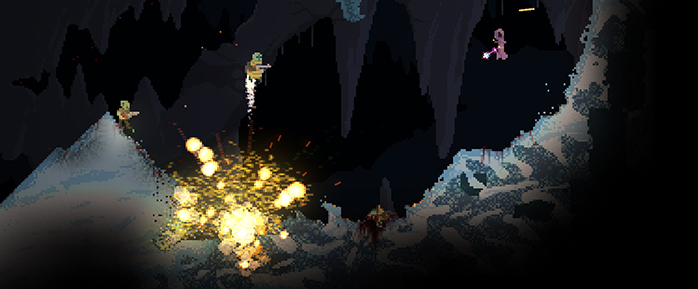
As mentioned earlier, the game is procedurally generated, so while the sequence of biomes and faunas will remain the same (first and second levels are mines, third is snowy, etc.) the different paths within the levels, the placement of wands, bonuses, and enemies are randomised and determined at the start of a new game. Procedurally generated levels, when done right, are a great way to increase replayability since every attempt will be different, and restricts the ability to die and retry, winning the game by memorising the levels. However, in a game where the amount of resources is limited, randomising the availability of resources can leave a feeling of being dead on arrival. Starting a new game, and despite taking time to explore, not being able to find good spells and perks in the early levels, and dying as soon as the difficulty ramps up. The location of enemies is also randomised, so a lucky player might have an easier time picking them off one at a time, whereas an unlucky one will face two chambers full of enemies in a row. On the other hand, the feeling of being doomed from the start can lead to exploring even deeper areas of the cave, because if the player is going to die, they might aswell die exploring rather than fighting an enemy they can’t possibly beat.
Victory through death.
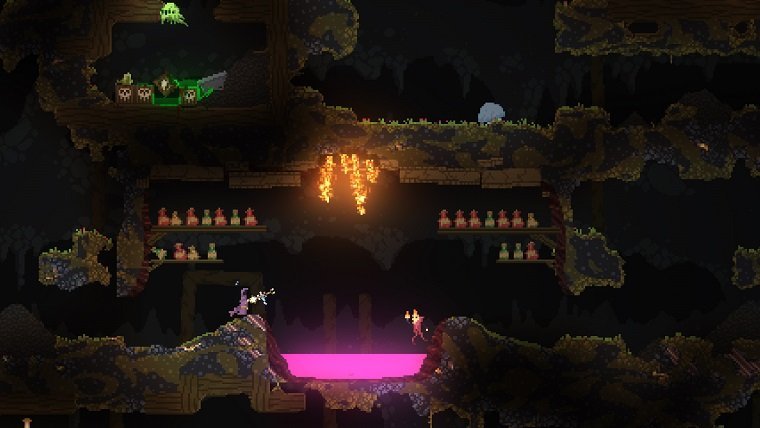
Noita is a game that can be beaten in anywhere between 1 and 40 hours. Logic, tenacity, vigilance, and improvisation are the key factors in a successful run, along with a fair bit of luck. Fans of magic, difficult games, roguelites, and pixel art should keep an eye out for this game where all playthroughs are different and all deaths are avoidable.

